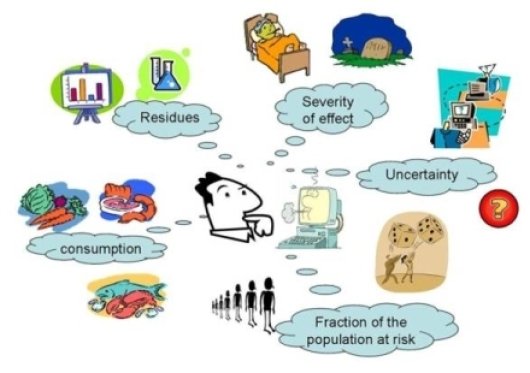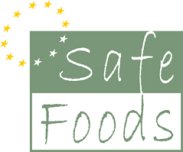1.2 Dietary exposure assessment
One step of the risk analysis is exposure assessment. In this paragraph we will look in more detail to dietary exposure assessment. Dietary exposure assessments are performed to assess if a harmful compound (or group of compounds) present in food forms a health risk for a certain population. Whether a contaminant will pose a health hazard or not depends on many factors, including:

- Absorption and toxicity of the substance
- Level of the contaminant present in the food or foods
- Processing effects
- Amount of contaminated food(s) that is consumed
- Duration of exposure
Besides, individuals differ in their sensitivity to contaminants and other factors in the diet can have an impact on the contaminant's toxic consequences.
There are two types of exposure:
- Acute: is when the adverse effect(s) of a substance result either from a single exposure or from multiple exposures in a short space of time (less than 24 hours)
Adverse effects: e.g. headache, eye irritation
Relevance: mainly pesticides - Chronic: is when a person is exposed to a substance continuously or repeatedly over a longer period of time (long-term and mostly at low levels)
Adverse effects: e.g. cancer, heart disease
Relevance: dioxins, PCBs, acrylamide, mycotoxins
The potential for food to become contaminated with chemical substances starts from the time it is grown and continues right through until it is consumed. In general, there are two categories of contaminants:
- Microbiological (e.g.: bacteria, fungi, viruses or parasites): this category results, in most cases, in acute symptoms.
- Chemical (e.g.: pesticides, mycotoxins, dioxins, heavy metals, etc.): it comprises residues intentionally or accidentally introduced into the food supply during farming, processing, shipping or packing.
Before addressing the two types of exposure in more detail we will first shortly describe the input data needed to calculate the dietary exposure to contaminants.
1. Food consumption data
When estimating the dietary exposure to contaminants concentration data on food consumption levels are crucial. For this it is important to have a database containing representative food consumption levels of the population(s) of interest. All population groups of interest should be present in quantities that make it possible to obtain representative food consumption data of these populations. Which population groups are of interest depends on the toxicity of the compound.
2. Residue data of contaminants
To assess the exposure to a contaminant, residue levels of the contaminant in relevant foods should be used. In practice, these levels are mainly obtained from national monitoring programmes. In these programmes residue levels of all kinds of contaminants are analysed in relevant products to check whether no maximum levels as set by law are exceeded. It should be realised when using these data to estimate the exposure in a population that the levels may not always be representative of the levels people are exposed to. Sampling of products is not always at random and is very likely (partly) focussed on those samples suspected to contain residue levels above the maximum levels (e.g. due to past problems). Use of these data in exposure assessment may thus lead to overestimates of exposure. Although, it is generally assumed that it is not beforehand known which parties of a certain food are more contaminated than others.
